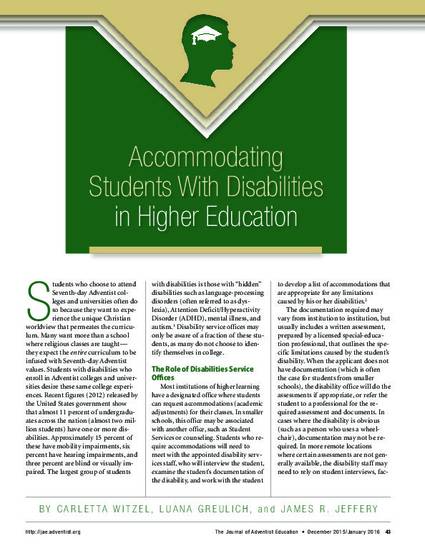
- Students with disabilities,
- higher education
Students who choose to attend Seventh-day Adventist colleges and universities often do so because they want to experience the unique Christian worldview that permeates the curriculum. Many want more than a school where religious classes are taught— they expect the entire curriculum to be infused with Seventh-day Adventist values. Students with disabilities who enroll in Adventist colleges and universities desire these same college experiences. Recent figures (2012) released by the United States government show that almost 11 percent of undergraduates across the nation (almost two million students) have one or more disabilities. Approximately 15 percent of these have mobility impairments, six percent have hearing impairments, and three percent are blind or visually impaired. The largest group of students with disabilities is those with “hidden” disabilities such as language-processing disorders (often referred to as dyslexia), Attention Deficit/Hyperactivity Disorder (ADHD), mental illness, and autism. Disability service offices may only be aware of a fraction of these students, as many do not choose to identify themselves in college.
Available at: http://works.bepress.com/james_jeffery/1/
